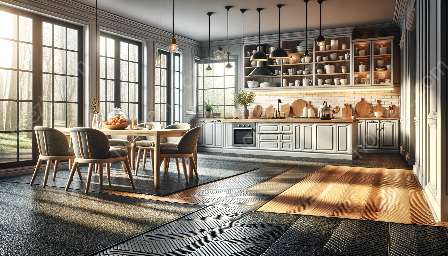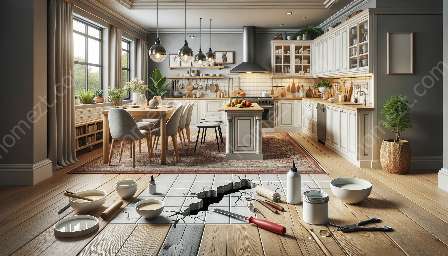Proper maintenance and care are essential for maintaining the beauty and functionality of your kitchen flooring. This comprehensive guide will cover everything you need to know to ensure your kitchen flooring stays in top condition for years to come.
Types of Kitchen Flooring
Before diving into maintenance tips, it's important to understand the different types of kitchen flooring available. Common options include hardwood, tile, laminate, vinyl, and concrete. Each type of flooring has its own unique characteristics and maintenance requirements.
Hardwood Flooring
Hardwood flooring adds warmth and elegance to a kitchen, but it requires regular maintenance to keep it looking its best. Regular sweeping and mopping with a hardwood floor cleaner are essential to prevent dirt and grime from accumulating.
Tile Flooring
Tile is a popular choice for kitchen flooring due to its durability and water resistance. Grout lines should be regularly cleaned and sealed to prevent staining and discoloration. It's important to use appropriate cleaners for different types of tile to avoid damage.
Laminate Flooring
Laminate flooring is easy to maintain, requiring regular sweeping and occasional mopping. However, it's essential to avoid excessive moisture, as it can cause the planks to warp or swell. Using felt pads under furniture legs can prevent scratching and damage.
Vinyl Flooring
Waterproof and low-maintenance, vinyl flooring is a popular choice for kitchens. Regular sweeping and mopping with a gentle cleaner are usually sufficient. However, it's important to avoid abrasive cleaning tools and harsh chemicals that can damage the surface.
Concrete Flooring
Concrete flooring offers a modern and industrial aesthetic for kitchens. Regular sealing and waxing are essential to maintain its appearance and protect it from stains and moisture. Using rugs in high-traffic areas can help prevent wear and tear.
General Maintenance Tips
Regardless of the type of flooring you have in your kitchen, there are several overarching maintenance tips that apply to all. Firstly, it's crucial to clean up spills immediately to prevent staining and damage. Regular sweeping or vacuuming can prevent dirt and debris from causing scratches. Using mats or rugs in front of sinks and high-traffic areas can protect the flooring from excessive wear.
Deep Cleaning
Periodic deep cleaning is essential to keep your kitchen flooring in top condition. For hardwood and laminate flooring, consider using a specialized wood floor cleaner and polish to restore shine and luster. For tile and grout, a thorough scrubbing with a grout brush and appropriate cleaner can keep it looking like new. Vinyl flooring can benefit from occasional buffing to maintain its shine.
Preventative Care
Preventing damage is key to maintaining the longevity of your kitchen flooring. Place protective pads under furniture legs to prevent scratches and dents. Avoid dragging heavy items across the floor, as this can cause damage, especially on hardwood and laminate flooring. Keep pet nails trimmed to prevent scratches, and use caution when wearing high heels that can cause indentations.
Professional Maintenance
For certain types of kitchen flooring, professional maintenance may be necessary. Hardwood flooring may benefit from periodic refinishing to remove scratches and restore its appearance. Tile and grout can be professionally cleaned and resealed to maintain their integrity. Knowing when to seek professional assistance can help extend the lifespan of your kitchen flooring.
Conclusion
Proper maintenance of your kitchen flooring is essential for preserving its aesthetic appeal and functionality. By understanding the specific care requirements of your flooring type and implementing regular maintenance routines, you can enjoy beautiful and durable kitchen flooring for years to come.







































